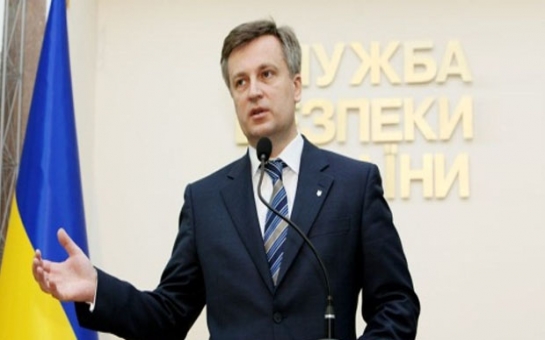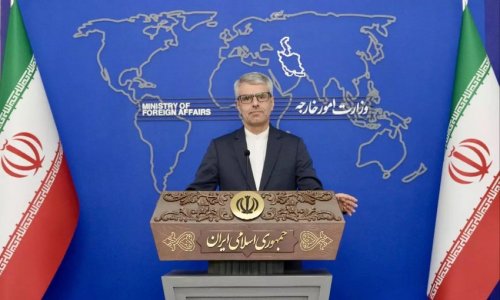Follow us !
Intelligence Chief: 100 Russian Officers Are Leading Ukraine's Uprisings - VIDEO
World
09:30 | 25.04.2014

Intelligence Chief: 100 Russian Officers Are Leading Ukraine's Uprisings - VIDEO
As many as one hundred Russian military intelligence officers and special forces troops are leading the seizures of towns and local governments in Ukraine's Donetsk province, the Ukrainian intelligence chief said today in his first public account of the crisis.Russia’s military intelligence agency, the GRU, has spent years building covert networks that its officers now are using to help seize cities such as Slaviansk and Kramatorsk in the north of Donetsk, said Valentyn Nalyvaichenko, the head of Ukraine’s State Security Service (the Sluzhba Bezpeky Ukrainy, or SBU). Nalyvaichenko, a career diplomat and security official, gave one of the broadest descriptions of the conflict by a Ukrainian official during an online discussion hosted by the Atlantic Council.As many as thirty special forces troops or officers of Russia’s military intelligence service, the GRU, are working in the Slaviansk region, Nalyvaichenko said. Slaviansk and the adjacent district of Kramatorsk are the strongest point of the Russian operation, he said. Ukraine is seeking in particular to arrest two other GRU officers who are coordinating “the most dangerous and hostile activity” in that region, Nalyvaichenko said. The SBU has named one of those as Colonel Igor Strelkov, who it says also coordinated preparations for Russia’s seizure of Crimea.The SBU has arrested three GRU officers whom it is interrogating in Kyiv, and twenty-one members of the GRU’s network, Nalyvaichenko said. Russian-organized gunmen hit a Ukrainian military aircraft flying over Slaviansk today and detained an American journalist for the website Vice News, Nalyvaichenko confirmed during the discussion, in which he answered questions submitted by reporters. While pro-Russian separatists have seized government buildings and organized public demonstrations in other parts of eastern Ukraine, notably Luhansk province, they are “not so hostile, they are not terrorizing, at least, the local community, and they are not conducting crimes or taking hostages every day like is happening currently in … Slaviansk,” Nalyvaichenko said.During the conversation, moderated by Atlantic Council Executive Vice President Damon Wilson, Nalyvaichenko spoke on these points:ON RUSSIA’S CONSTRUCTION OF A SUBVERSIVE NETWORK. “For the last – we now understand -- two or three years,” officers of Russia’s GRU “have created very covert but well-structurized networks with agents, with pro-Russian organizations, involving in such illegal activity many Ukrainians,” he said. Those networks are most developed in Crimea, which Russia seized and annexed in March, and in eastern Ukraine, Nalyvaichenko said. “Russian military officers … are the main provocateurs and main organizers” of the uprisings in the east, recruiting sympathizers and paying local criminal gangs to help attack local governments. “We for sure know now who are they, I mean those Russian officers,” Nalyvaichenko said. “They are very dangerous, well armed, [and] for years before prepared to do what they are doing now.”ON THE ROLE OF POVERTY AND PROPAGANDA. In Donetsk and Luhansk provinces, in farthest southeast Ukraine, “up to 30 percent of the population is very pro-Russia,” notably following twenty years of heavy Russian propaganda through Moscow-dominated TV channels and radio networks that broadcast to the area. The two provinces, which rely on inefficient and struggling Soviet-era heavy industry and mining, “are very poor … with a high level of unemployment,” Nalyvaichenko said. “There are many people, that’s true – hundreds, sometimes even thousands – who are very easy to engage” in secessionist, pro-Russia demonstrations and other activism, he said. The Russian military officers are “paying money in cash” to draw people to demonstrations in support of the Moscow -backed demands for Ukraine to become a federalized state with a weak central government, or for eastern Ukraine to secede and perhaps join Russia.ON UKRAINE’S DIFFICULTIES IN RESPONDING. Ukraine’s government cannot easily conduct forcible operations to remove the separatists who have seized government buildings in eastern cities because of the presence of civilians in and around them. “Many civilians are truly on the scene; some of them again are paid for , some of them are not. But local communities – especially Slaviansk and Kramatorsk -- are with those criminals and Russian military officers” who are organizing the uprisings, he said. Kyiv’s best option -- “the main tool to calm down the situation” in the east – will be for the central government to provide more funding, “more support to maintain normal life” to local authorities, “especially in Donetsk and Lugansk oblasts.” Kyiv hopes to do so “as soon as there will be more [financial] resources in the central government.”ON UKRAINE’S HOPES FOR HELP FROM INTERNATIONAL MONITORS. Ukraine’s government is in contact with separatist groups, including in the hardline cities of Slaviansk and Kramatorsk, trying to persuade them to disarm and end their seizures of those cities. But it is hoping that international civilian mediators from the Organization for Security and Cooperation in Europe. “We’re relying on OSCE to help persuade them to stand down,” Nalyvaichenko said. “We’re ready to extend their mandate in Donetsk and Slaviansk,” and “to provide all evidence we are collecting every day” about the uprisings.ON U.S. INTELLIGENCE SHARING WITH UKRAINE. “Information and intelligence sharing and even cooperation with our colleagues from the United States are really well organized,” Nalyvaichenko said. “ We’re satisfied with the level of cooperation. It is very intensive. It is very professional.” ON RUSSIAN TROOPS THREATENING UKRAINE’S BORDERS. Nalyvaichenko confirmed estimates released by NATO of the Russian forces deployed near Ukraine’s eastern borders. He said these include about 40,000 troops, 700 armored vehicles and 250 aircraft. They are deployed in three groups: one near the Russian city of Belgorod, directed toward Ukraine’s second-largest city, Kharkiv; a second grouped near the southern Russian city of Rostov and directed toward Donetsk; and a third further south. He estimated that an additional 10,000 Russian troops are in Crimea.ON THE UKRAINIAN GOVERNMENT’S ‘SLEEPLESS NIGHTS.’ In “the past month and a half” there have been “many, many sleepless nights for me” because Russia has been constantly simulating and feinting full-scale invasions of Ukraine. “Every night and every day,” Russia has been conducting the “moving of troops, alarms, alerts, radio communications, [and] provocations at the border.” They are “using all possible … tools and methods” to intimid Ukraine’s government.James Rupert is managing editor of the Atlantic Council. Irena Chalupa covers Ukraine and Eastern Europe for the Council.http://www.atlanticcouncil.org/blogs/new-atlanticist/intelligence-chief-100-russian-officers-are-in-ukraine-directing-uprisingsBakuDaily.Az










